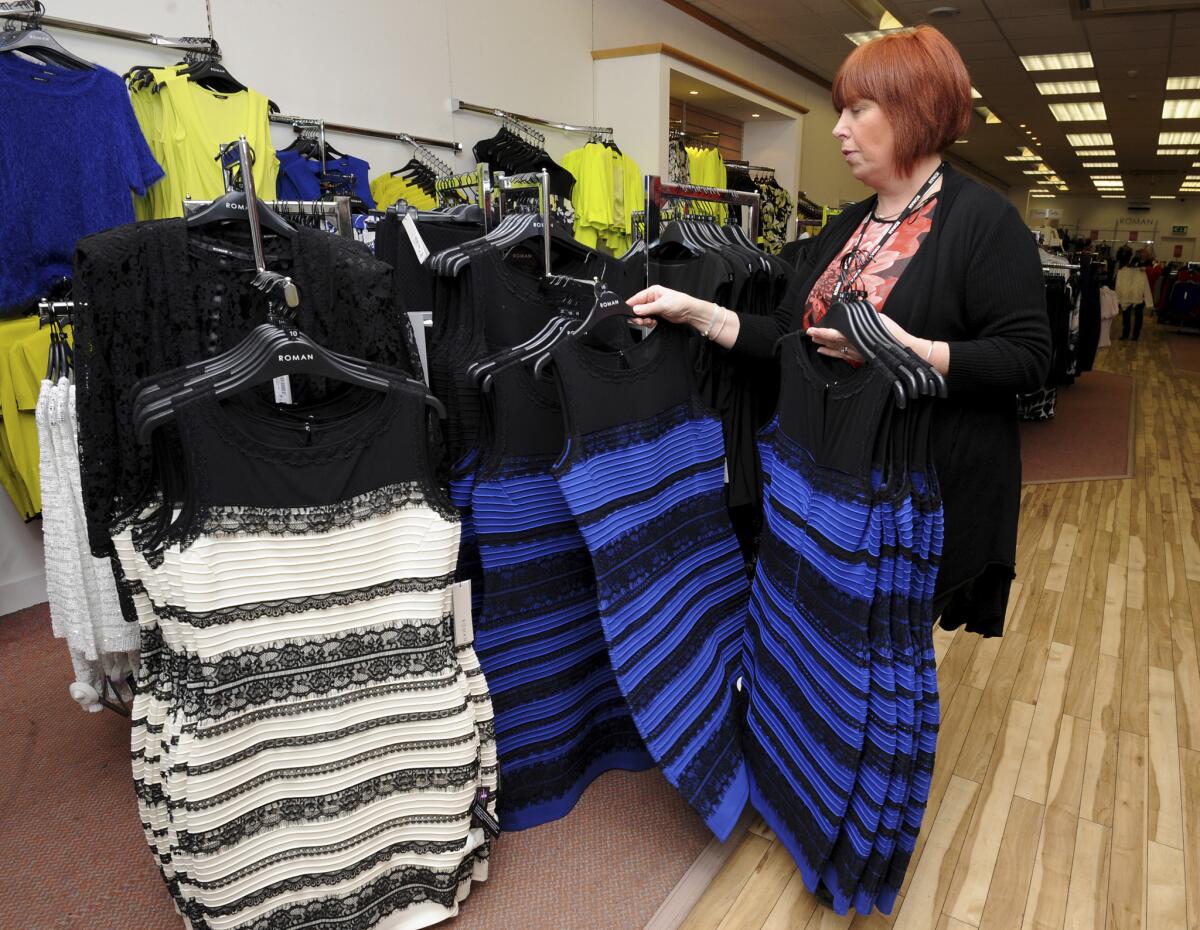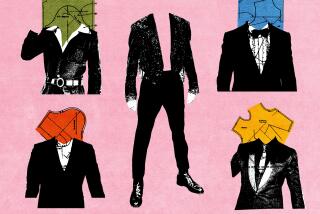This is how a dress of many colors blew up on the Internet

On the same day the federal government weighed in to guarantee net neutrality, social media blew up and the country on Thursday learned the real value of making the cutting edge of communication open to everybody.
No, this is not about the fleeing llamas that had briefly monopolized social media.
It’s about an overexposed photograph of a dress, whose colors were as chameleon-like as the perceptions of its viewers. Is it gold and white? Was it black and blue? A passionate debate exploded around the world with tens of millions of social media posts, in part fueled by A-list celebrities.
There hasn’t been this much discussion about a garment’s colors since Joseph and his fabled coat. The issue elevated itself all the way to the White House, where the Wall Street Journal’s Byron Tau on Friday tweeted pictures of reporters debating the pressing issue of the dress.
In case you live in a cave and don’t know what’s going on, here is a quick fill designed to make you as smart as the typical celebrity or journalist.
It starts with an overexposed image of an inexpensive, not-too-fancy dress worn at a Scottish wedding. People began arguing about whether it was white and gold, or blue and black.
A Scottish singer, Caitlin McNeill, shared the shot on Tumblr and it was off to the digital races as thought leaders and celebrities from around the globe quickly jumped into the debate. By definition, whatever enough celebrities care about can determine what the world cares about. Like wealth, information power is also unequally distributed in society.
“From this day on, the world will be divided into two people. Blue & black, or white & gold,” tweeted Ellen DeGeneres to her 40 million followers on Twitter.
“What color is that dress? I see white & gold,” Kim Kardashian West told her 29.4 million Twitter followers. Her husband, “Kanye sees black & blue, who is color blind?,” she pleaded.
Then came the soulful tweet from Taylor Swift, cuing her 53.4 million followers.
“I don’t understand this odd dress debate and I feel like it’s a trick somehow. I’m confused and scared. PS it’s OBVIOUSLY BLUE AND BLACK.”
Driving the frenzy, numerous other celebrities from Oscar-winning actress Julianne Moore and noted actor Rob Lowe made their preferences known. Buzzfeed also weighed in very early and helped push the wave, successfully riding it to mega-millions more hits.
The success of the dress meme is only partly based on the power of celebrity in an information-driven age.
The mystery element of what is really going on certainly helped push the participation. As trolls have long known, argument is often the best fuel for information transmission.
According to many of the stories in the mainstream media, there is actually a scientific explanation for how people could see different color schemes of the dress while looking at the same photograph.
All the explanations involve rods and cones in the eye. But frankly, science isn’t the explanation for what, at its heart, is a social phenomenon.
For the record, the Federal Communications Commission voted Thursday to implement new net neutrality rules designed to make sure Internet service providers treat all legal content equally.
“The Internet is too important to allow broadband providers to make the rules,” FCC chief Tom Wheeler said in announcing the new policy – before the dress kerfuffle reached a crescendo.
Follow @latimesmuskal for national news.
More to Read
Start your day right
Sign up for Essential California for news, features and recommendations from the L.A. Times and beyond in your inbox six days a week.
You may occasionally receive promotional content from the Los Angeles Times.







